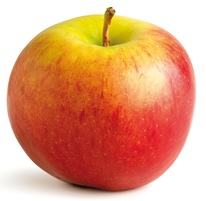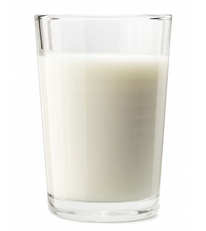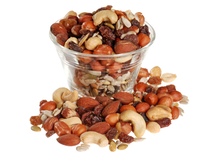Almonds have often been touted as a great source of energy. But a new study published in the American Journal of Clinical Nutrition claims the energy content of almonds has been overestimated by at least 30 percent.
So what are some good energy foods? Registered dietitian Stephanie Hull says her go-to energy foods are those that are high in both complex carbohydrates and protein. The carbs allow for an instant to medium-range energy boost, and the protein provides long-lasting energy and satiety. She says almonds, while being dense and packed with protein and fats, lack the carbohydrates for that immediate energy.
Here are five types of food Hull recommends (and a few pitfalls to avoid).

1) Fruit With Skin
Why: Fruits, especially those with skin, contain a high amount of carbohydrates, but also a lot of fiber, which Hull says aids the feeling of fullness.
The Best Kinds: Rely on your eyes, she advises. “Look for something that has some skin or some fiber that you can see.” Specifically apples (which have fibrous skin) and oranges, whose fiber is seen through the “white stringy parts,” provide great go-to energy.
Types to Avoid: Watermelon has a lot of water and sugar but “not much fiber, if any,” meaning you’d be hungry soon after eating it.

2) Yogurt or Milk
Why: If dairy doesn’t affect you
adversely, yogurt or milk is great for energy because it contains a
combination of carbohydrates and protein. The milk proteins offer a high
level of satiety, and the natural sugars can be converted to glucose,
which is used for brain and muscle function.
The Best Kinds: Greek yogurt contains a high amount of protein, but even “drinking a glass of low-fat milk is fantastic,” Hull says.
Types to Avoid: The
types of yogurt that come with sugary mix-ins like M&Ms and
granola, Hull warns. “There’s a lot of extra sugar that isn’t going to
help.” The simple sugar burns off quickly, or worse, is converted into
stored fat if your body doesn’t need the energy.

3) Beans and Lentils
Why: Both beans and lentils are protein-heavy complex carbohydrates, offering long-lasting satiety without much added sugar or fat.
The Best Kinds: “From a snack standpoint, you could try some hummus or a black bean or lentil soup,” Hull says.
Types to Avoid: Anything
with the word “refried” or products that are extremely processed. “Look
for words [like] ‘added’ or ‘hydrogenated oils,’” Hull says. “The less
processed, the fewer ingredients and the healthier that food’s going to
be.”

4) Whole Grains
Why: True whole grains contain a great amount of protein. They’re similar to beans and lentils in that they’re protein-heavy complex carbohydrates, but you can easily head down the wrong path with them if you’re not careful.
The Best Kinds: “Look for a sweet potato or a whole-wheat bagel,” Hull says. She notes that Thomas brand whole-wheat bagels contain nine grams of protein.
Types to Avoid: If it’s white, it’s probably not worth a bite. “The more white, refined products strip a lot of the grain away,” Hull says. “You’ll be hungry more often because you’ll burn it off much faster.”

5) Trail Mix
Why: “That’s a great combination of protein and carbs,” Hull says. Like whole grains, trail mix can be a fantastic source of energy, but it can also become a sugar-and-calorie fest if you’re not careful about what’s going in it.
The Best Kinds: “More natural,” Hull advises. “The dried fruit is fine so long as there’s granola and flax seed.” It’s important to remember nuts are calorically dense, so adding some grains and dried fruit would balance it nicely.
Types to Avoid: It’s a vague term, so don’t let it be defined as a bag of candy. “If it’s all chocolate chips and white chocolate, then it’s too much sugar,” Hull says. Also remember that trail mix packs a lot of energy but also a lot of calories. “A little bit goes a long way,” says Hull.
All photographs courtesy of Shutterstock.


















